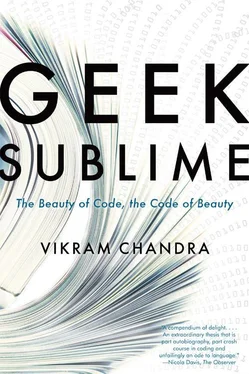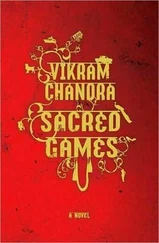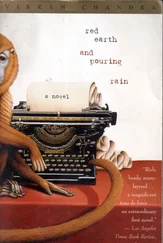Around the beginning of the nineteenth century the Sanskrit grammar of the ancient Hindus became known to European scholars. Hindu grammar described the Sanskrit language completely and in scientific terms, without prepossessions or philosophical intrusions. It was from this model that Western scholars learned, in the course of a few decades, to describe a language in terms of its own structure. 18
Paul Kiparsky tells us:
Western grammatical theory has been influenced by [Panini’s work] at every stage of its development for the last two centuries. The early nineteenth-century comparativists learned from it the principles of morphological analysis. Bloomfield modelled both his classic Algonquian grammars and the logical-positivist axiomatization of his Postulates on it. 19
Further:
Theoretical linguists of all persuasions are … impressed by its remarkable conciseness, and by the rigorous consistency with which it deploys its semi-formalized metalanguage, a grammatically and lexically regimented form of Sanskrit … Generative linguists for their part have marveled especially at its ingenious technical devices, and at intricate system of conventions governing rule application and rule interaction that it presupposes, which seem to uncannily anticipate ideas of modern linguistic theory (if only because many of them were originally borrowed from Panini in the first place). 20
Modern linguistic theory, in its turn, became the seedbed for high-level computer languages. To ease the pain of programming in low-level languages like machine code and assembly, computer scientists were driven to create artificial, formal languages. The efforts of linguists toward understanding language in formal and generative terms led to the work of John Backus, the IBM language designer whose team created FORTRAN, the first widely used high-level programming language. Backus proposed using “metalinguistic formulae” to describe the working of a programming language in 1959. This method was further simplified by Peter Naur, and the resulting “Backus — Naur Form” remains the primary method of describing and generating formal computer languages. Backus apparently came up with his ideas knowing nothing of Panini, at least directly, but, as the Sanskritist Murray Emeneau put it, “Most of the specific features that are taken … to distinguish an ‘American’ school of linguistics from others are Bloomfieldian, and … many are Paninean.” 21In 1967 a programmer named Peter Zilahy Ingerman wrote to the Communications of the ACM (Association for Computing Machinery) to argue that “since it is traditional in professional circles to give credit where credit is due, and since there is clear evidence that Panini was the earlier independent inventor of the notation, may I suggest the name ‘Panini-Backus Form’ as being a more desirable one?” 22
Panini’s analysis and innovations may therefore be seen as the foundation of all high-level programming languages. But the Ashtadhyayi also had an indelible effect on Sanskrit, the language he was describing: it gave this spoken tongue the stability of formal languages — like programming languages — in which a set of rules precisely constrains the symbols, syntax and usages. Natural languages have the tendency to change over time, but Sanskrit has remained astonishingly unchanged in the two and a half millennia since Panini. There have been strong trends toward certain usages, such as the use of compound words, but in general “the stress on refinement and correctness, the overwhelming anxiety to live up to a felt Paninian ideal, kept the language formal for everyone, and channelled creativity towards involution, elaboration, and increasing precision.” 23
So one of the problems of working with Sanskrit texts is that internal linguistic usages give you very little evidence, if any, of provenance and dating. If you had a pandit in contemporary Varanasi write a letter in Sanskrit and time-machined it back 2,000 years, his ancestors would be able to read it with perfect ease. In Sanskrit, therefore, the usual distinction between normal and formal language is collapsed, and the original derivation of the language’s name from the root samskrta , “constructed, finished, well or completely formed,” carries precise denotative value. It is only later that “Sanskrit” comes to suggest refined speech, to refer to the language of the shishta , the educated, the superior, the polite.
Then, as now, Indians spoke more than one language in daily use. Sanskrit was the eternal language of the cosmopolis, of the marga , the path; the Prakrits were the “natural, normal, ordinary” regional languages, the languages of desha , of place. Because Prakrits were subject to change, the stricter grammarians regarded them as apabhramsa , “degenerate languages” that had sloughed off from the eternal Sanskrit through careless usage. People spoke both Sanskrit and Prakrits, and they were not — as elsewhere in the world — speaking two registers of the same language. They existed in a condition that is better described as “hyperglossia” than “diglossia”: “What we encounter is not an internal split (di-) in registers and norms, typically between literary and colloquial usage,” Sheldon Pollock tells us, “but a relationship of extreme superposition (hyper-) between two languages that local actors knew to be entirely different.” 24
The Kamasutra , a Sanskrit text addressed to urban sophisticates, advises that “by having one’s conversations in the assemblies neither too much in Sanskrit nor too much in the local language a person should become highly esteemed in the world.” 25Too much eternal language and you revealed yourself as a total marga snob; too much Prakrit, on the other hand, marked you as a desi bumpkin. Sanskrit drama reproduced these social dynamics as a convention: the upper-class males — kings, ministers, educated Brahmins — spoke Sanskrit; everyone else spoke Prakrit: merchants and bankers, women (with the exception of courtesans), and of course the lower classes.
Sanskrit — once the language of liturgy — was officially available only to the “twice-born” of the caste system, to its top three tiers of Brahmins, Kshatriyas (warriors), and Vaishyas (traders). Sudras — the manual laborers, the people who provided services — were forbidden to learn or speak Sanskrit, as were those who fell outside the caste system altogether, such as tribal peoples. Thus those who spoke against the Brahminical system — the Buddha, for instance — often used Prakrit languages because Sanskrit was marked as the language of the elite.
Whatever its social value, Sanskrit’s stability and emphasis on precision meant that it was regarded as an ideal language for the sciences and philosophy. Since it was believed to be an eternal language, the fifty phonemes of Sanskrit, the matrka , were regarded as the root vibrations from which the universe had emerged, and were sometimes worshipped as the “little mothers.” 26Sanskrit phonemes and words therefore had an elemental, essential link to reality that other languages lacked. This view was challenged by Buddhist thinkers who argued that “the signifier is related to the signified as a matter of pure convention,” but the notion that the truth could only be spoken in Sanskrit, and grammatically correct Sanskrit at that, was immensely persuasive. 27Two monks were said to have argued that the Buddha’s words should be translated into Vedic Sanskrit, since people were corrupting them by repeating them in local dialects. The Buddha himself rebuked them, “Deluded men! This will not lead to the conversion of the unconverted,” and he commanded all monks, “You are not to put the Buddha’s words into [Vedic-Sanskrit] verse. To do this would be to commit an infraction. I authorize you, monks, to learn the Buddha’s words each in his own dialect.” 28This injunction was obeyed, and Pali, “a new and parallel sacred language,” was created by Buddhists, and yet, by the second century CE, “a vast Buddhist canon in Sanskrit” had been created. 29The rebels against Vedic authority — the Buddhists, the Jains, the Tantrics — had to speak in Sanskrit after all.
Читать дальше












